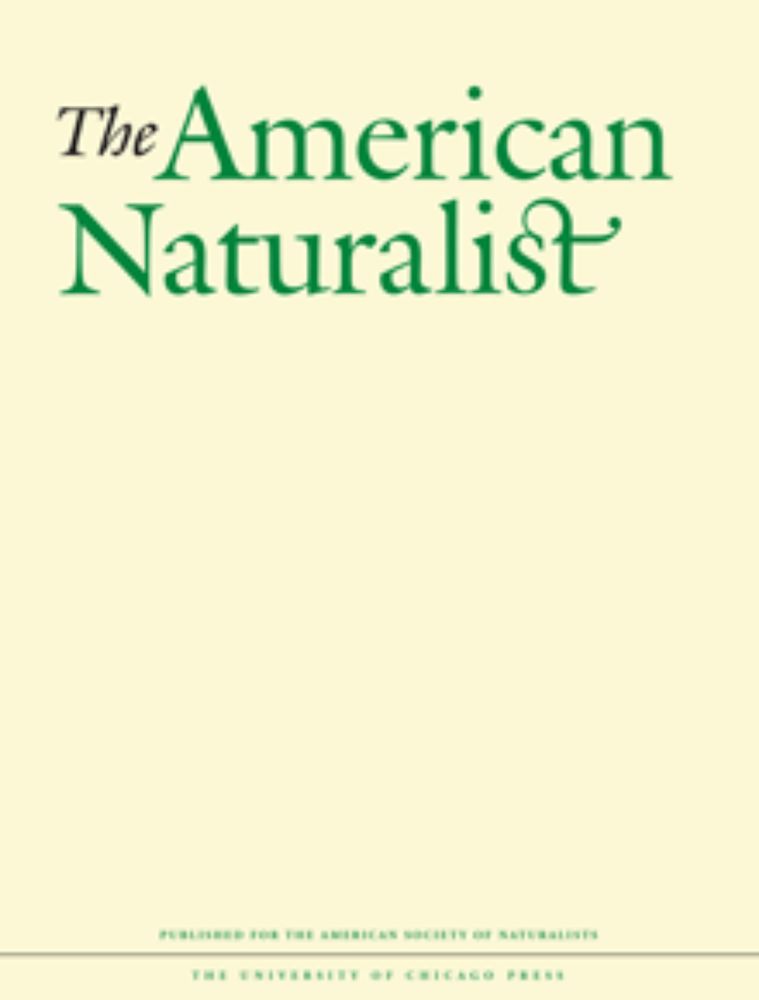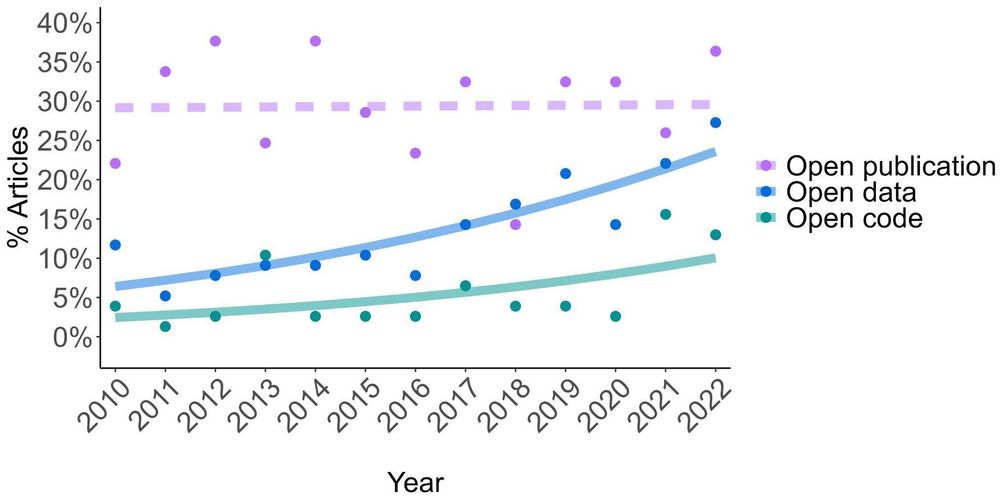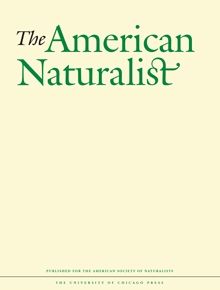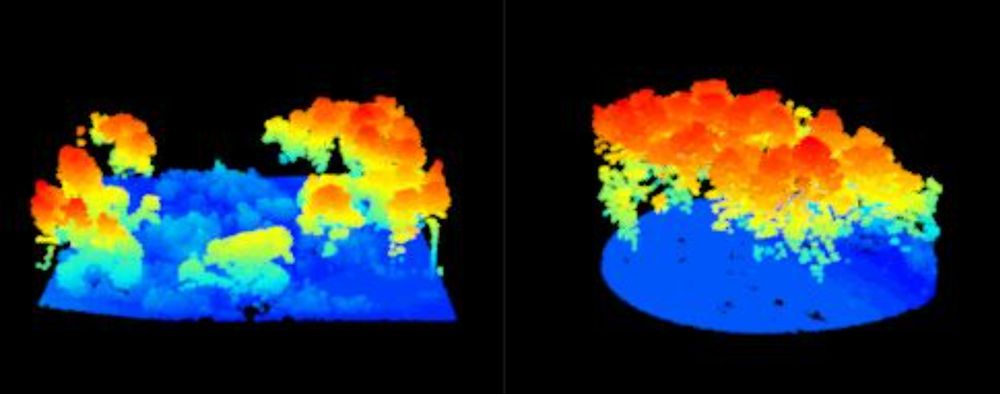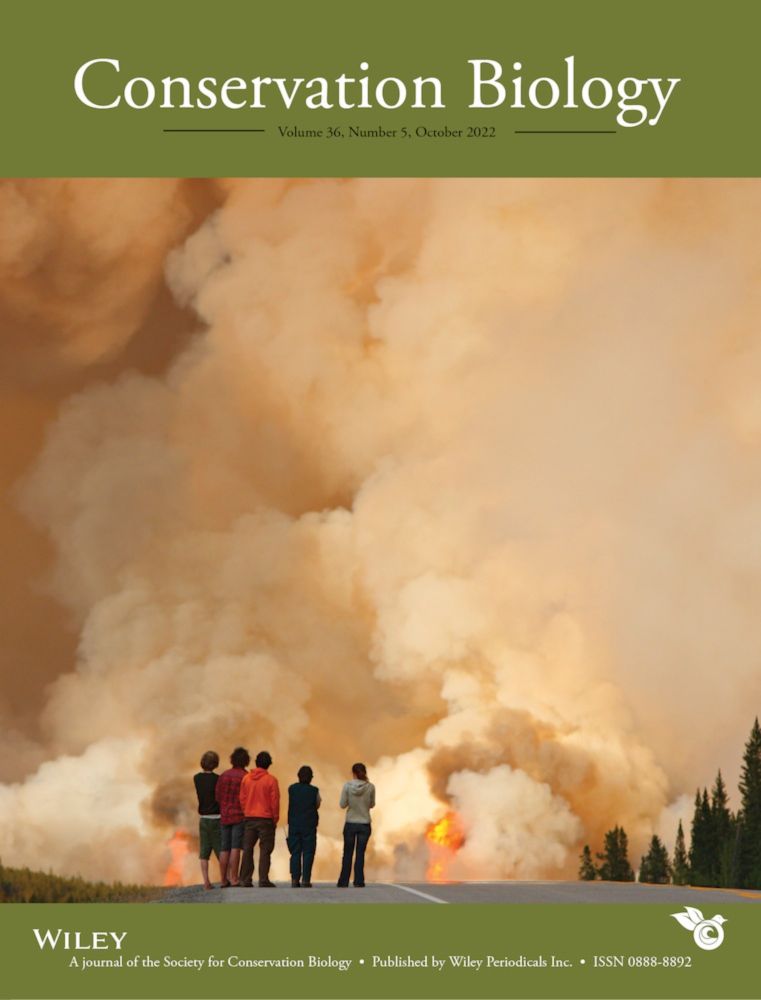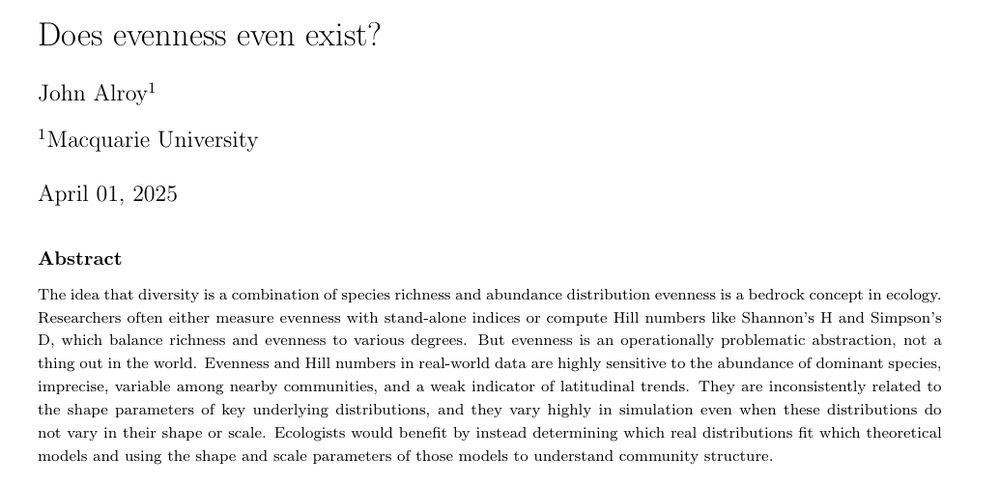
Does evenness even exist?
On this I can agree:
"Ecologists would benefit by instead determining which real distributions fit to which theoretical models and using the shape and scale parameters of those models to understand community structure"
d197for5662m48.cloudfront.net/documents/pu...
🧪 #Paleobio #EvoBio #Macroecology
09.04.2025 20:06 — 👍 21 🔁 5 💬 0 📌 0
A Bayesian approach to include Indigenous Knowledge in habitat selection functions https://www.biorxiv.org/content/10.1101/2025.03.26.645387v1
01.04.2025 08:31 — 👍 2 🔁 1 💬 0 📌 0
you’re fired. wait you’re rehired. email us a list of things you’ve done today wait forget it you’re fired again. come back your job was important. you’re fired. or hired. come in to the office. wait the office has no computers go home. we are the department of government efficiency.
05.03.2025 22:34 — 👍 97756 🔁 27065 💬 1559 📌 1278
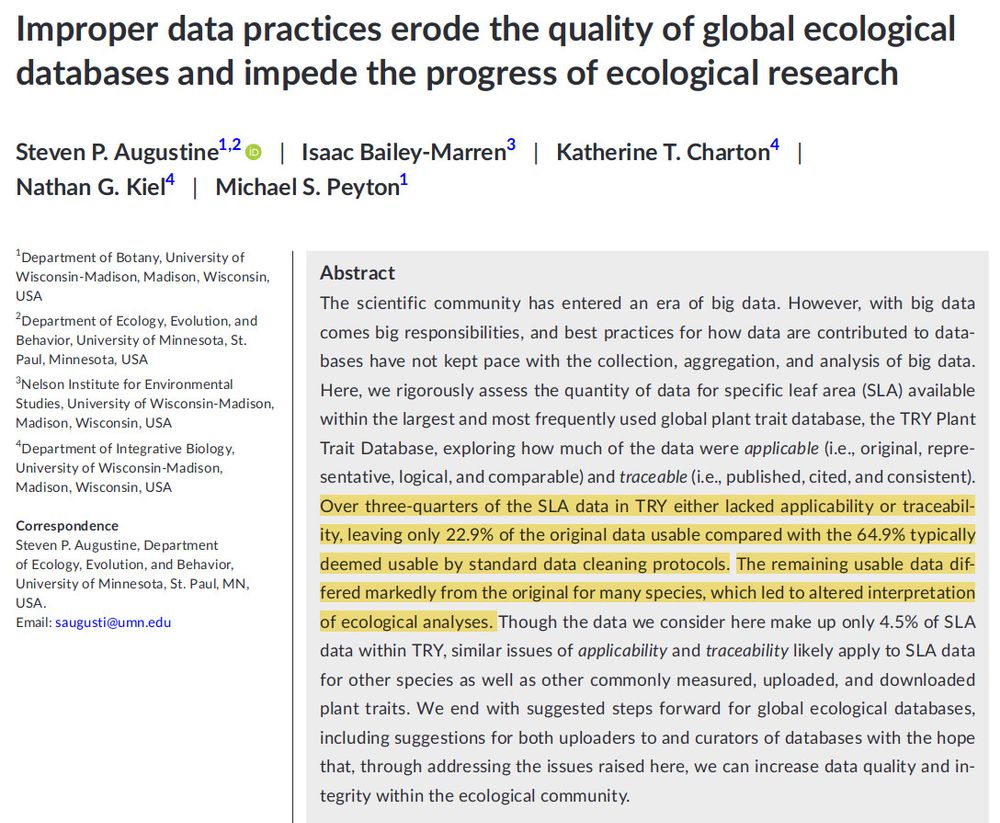
Improper data practices erode the quality of global ecological databases and impede the progress of ecological research
The scientific community has entered an era of big data. However, with big data comes big responsibilities, and best practices for how data are contributed to databases have not kept pace with the collection, aggregation, and analysis of big data. Here, we rigorously assess the quantity of data for specific leaf area (SLA) available within the largest and most frequently used global plant trait database, the TRY Plant Trait Database, exploring how much of the data were applicable (i.e., original, representative, logical, and comparable) and traceable (i.e., published, cited, and consistent). Over three-quarters of the SLA data in TRY either lacked applicability or traceability, leaving only 22.9% of the original data usable compared with the 64.9% typically deemed usable by standard data cleaning protocols. The remaining usable data differed markedly from the original for many species, which led to altered interpretation of ecological analyses. Though the data we consider here make up only 4.5% of SLA data within TRY, similar issues of applicability and traceability likely apply to SLA data for other species as well as other commonly measured, uploaded, and downloaded plant traits. We end with suggested steps forward for global ecological databases, including suggestions for both uploaders to and curators of databases with the hope that, through addressing the issues raised here, we can increase data quality and integrity within the ecological community.
1/ Important read for anyone using, contributing, or building large databases by aggregating data sources. Discusses issues with data quality, duplication, credit attribution, etc, and includes recommendations for improvement
doi.org/10.1111/gcb.... #ecopubs
29.11.2024 11:01 — 👍 99 🔁 39 💬 4 📌 4
A presentation I did a while back (2015!) for first-year u/g math students about interesting stuff in math biology (apologies for PPTX & ugly eqns; a few of the figures are messed up in LibreOffice) - mostly showing fun pattern-formation pictures www.math.mcmaster.ca/bolker/misc/...
18.12.2024 19:01 — 👍 2 🔁 1 💬 1 📌 0
📍Pinned Post: Welcome to the papers with code feed!
bsky.app/profile/did:...
Papers from PubMed, bioRxiv, Bature, PLoS, etc, with links to GitHub will be included here. Anyone can post to this feed.
See also: blog.stephenturner.us
05.12.2024 10:05 — 👍 27 🔁 5 💬 0 📌 0
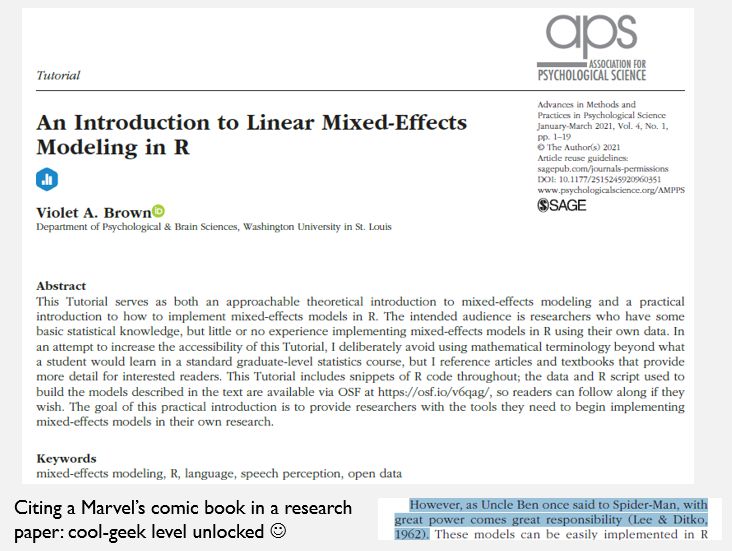
If you're looking for a gentle introduction to fit linear mixed models with R, with lots of examples, data & code available, here's one below. And not just another paper, just realized this one actually cites a Marvel’s comic book: cool-geek level unlocked :) journals.sagepub.com/doi/10.1177/...
02.12.2024 10:41 — 👍 24 🔁 8 💬 0 📌 0
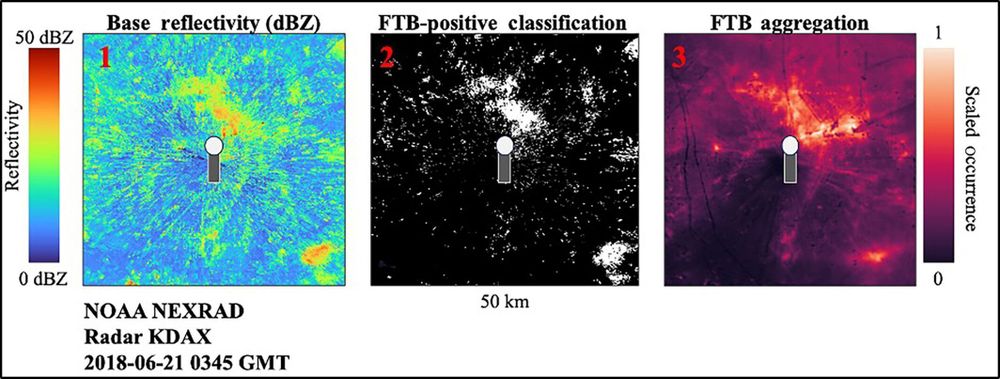
📖Published📖
Our new Application article introduces BATS, a python-based toolkit for landscape-level monitoring of free-tailed bats via weather radar 🦇 🌎 🧪
https://buff.ly/4fNcYeE
23.11.2024 10:00 — 👍 30 🔁 4 💬 1 📌 0
Resharing my attempt at a #mathbio starter pack for those (millions?!) of people who've joined in the last week!
Please let me know if you'd like to be added (I've not kept up with the incoming hordes well)
go.bsky.app/GVkxwBv
20.11.2024 08:56 — 👍 32 🔁 13 💬 17 📌 0
Movement and migration ecology starter pack! Help me fill it out as more folks join Bluesky 🌎🌍🌏
go.bsky.app/SSiWN2u
18.11.2024 02:39 — 👍 71 🔁 33 💬 45 📌 1
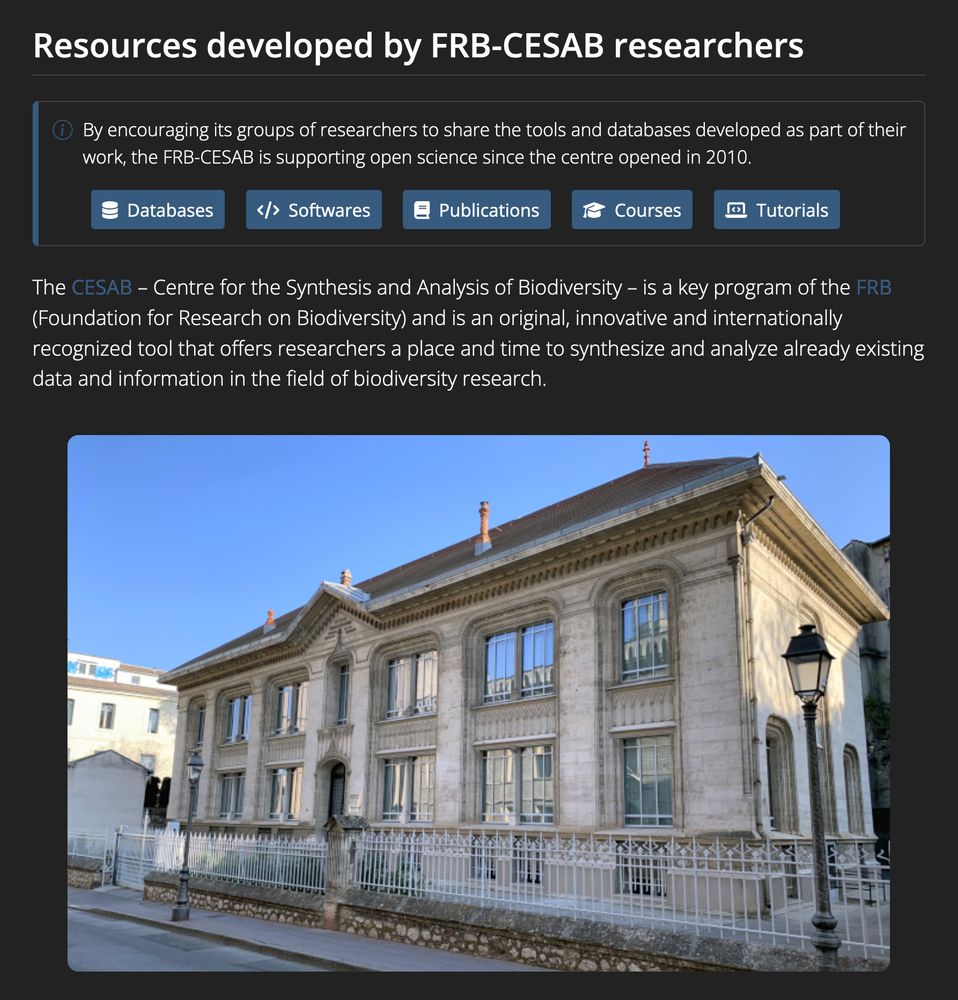
🔬 Check out the official #CESAB GitHub repository for data, code, and resources to boost your biodiversity synthesis research ... from functional ecology to world pa, litterarure scraping, bayesian analysis and more! 🛠️
👉 frbcesab.github.io
#OpenScience #Biodiversity #DataSharing #R
🧪🌍🦤🦑
21.11.2024 13:26 — 👍 41 🔁 15 💬 0 📌 0
Just created a starter pack for ecological forecasting community! 🦋🍃 Please let me know if you want to be added!
go.bsky.app/Qk9PfFw
14.11.2024 07:12 — 👍 49 🔁 26 💬 33 📌 1
My new paper is out in Bioacoustics: "Field tests of small autonomous recording units: an evaluation of in-person versus automated point counts and a comparison of recording quality." doi.org/10.1080/0952...
Thanks to NSERC and Bowdoin Scientific Station.
#bioacoustics #ARUs #ornithology
11.11.2024 11:54 — 👍 43 🔁 17 💬 1 📌 2
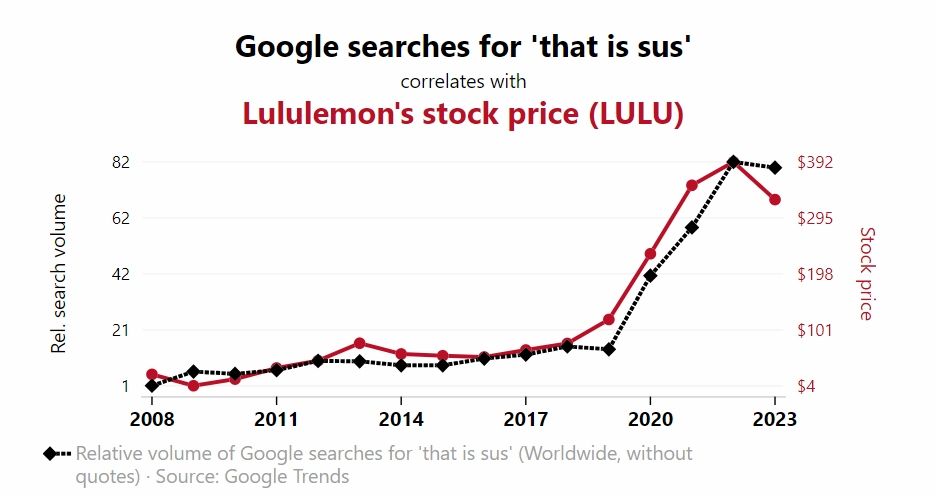
Spurious Correlations
Correlation is not causation: thousands of charts of real data showing actual correlations between ridiculous variables.
Maybe having them find random correlations in unrelated data akin to this page:
www.tylervigen.com/spurious-cor...
I'd say it's decently silly but still teaches a good lesson about how stats can be incorrect when you don't consider the context of your data
21.11.2024 01:26 — 👍 2 🔁 0 💬 1 📌 0
Me in my Echo Chamber
20.11.2024 01:57 — 👍 18 🔁 1 💬 1 📌 1
We have a starter pack for scientists using camera traps! 📸 If you work with camera trap data in any way, either collecting data, running ecological models, training CV/ML models, let me know I’ll add you to this list 🎉 go.bsky.app/CbJkbVw
16.11.2024 02:41 — 👍 49 🔁 20 💬 31 📌 2
Totally forgot about this game, so re-posting again! Good nerdy guessing-game animal wordle-esque fun :) 🧪
19.11.2024 13:31 — 👍 10 🔁 4 💬 0 📌 0
In the simpler days of 2015/16 we wrote the BES Guide to Reproducible Code: www.britishecologicalsociety.org/wp-content/u.... It’s time for a refresh! Would you like to help? I’m looking for people to review the existing booklet by 5th December.
18.11.2024 12:53 — 👍 53 🔁 42 💬 7 📌 3
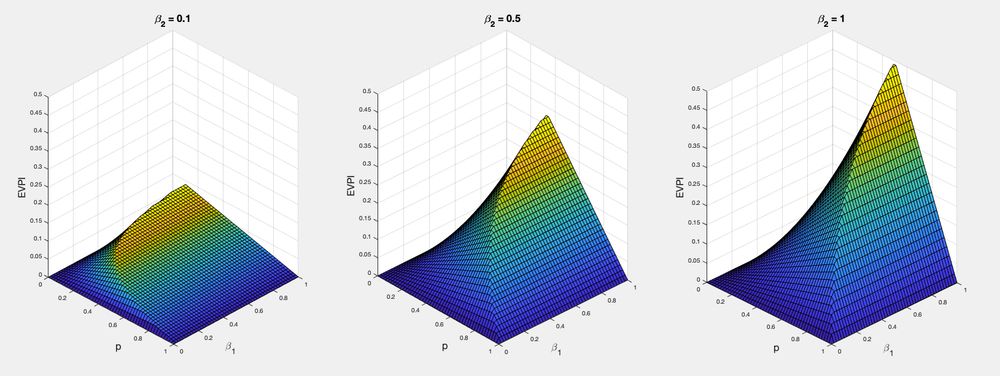
3D plots showing how the value of information is often low and only high when an analytic condition is met. See the paper in link for a full description
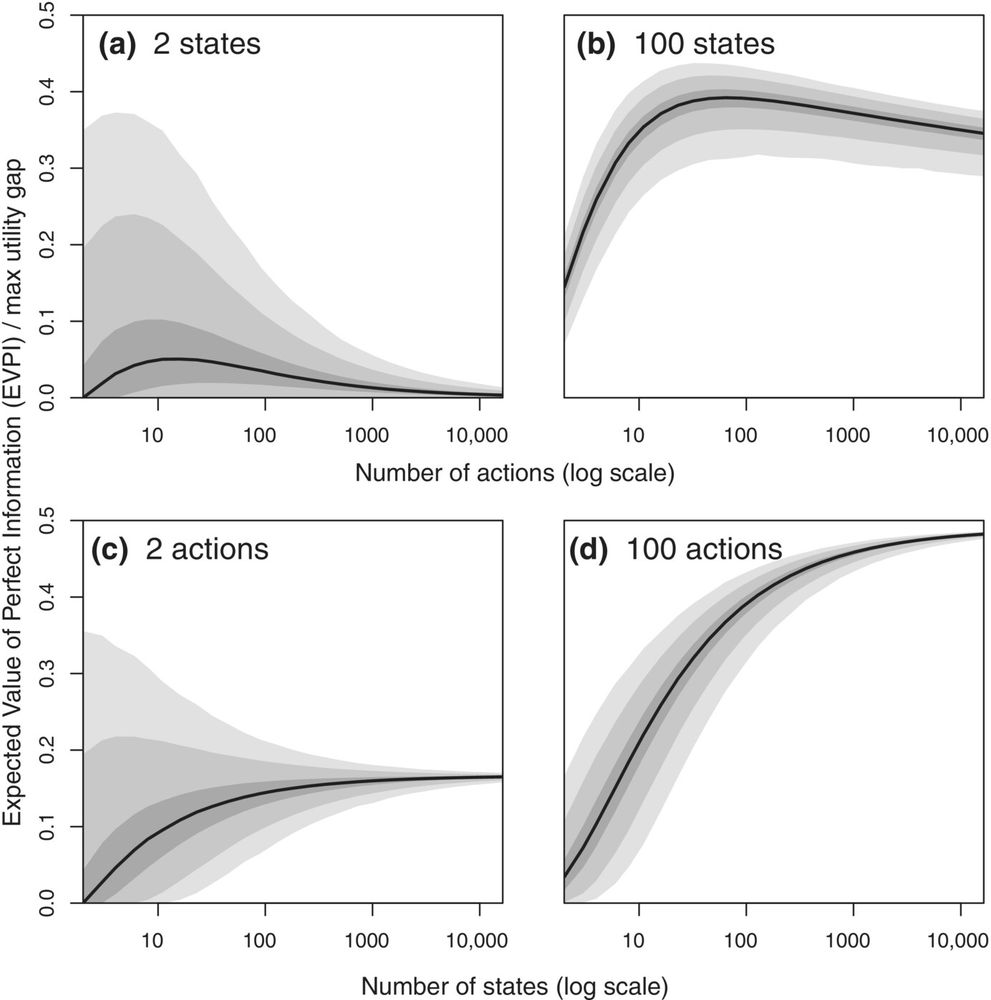
Plots showing how the value of information depends on the number of actions and states, with more actions and states often leading to higher value of information. See the paper in the link for a full description
When do you need to collect more data? ... surprisingly, more data often has little value for decisions. Our new paper unravels why "Value of Information Analyses" can yield surprising results in #ecology doi.org/10.1111/2041... w @katehelmstedt.bsky.social in @methodsinecoevol.bsky.social 🌍
18.11.2024 22:19 — 👍 31 🔁 11 💬 0 📌 1
Birds, biodiversity, evolutionary biology, macroecology, conservation biology, ecosystem science, sustainable development, world birding, and other stuff. He/him
More at http://www.tobiaslab.net
Carnivore Ecology and Coexistence 🦁| UWyo PiEE PhD Student in the Goheen Lab | NSFGRFP | Duke U Alum 🌿| she/her
Assistant Prof. of Applied Quantitative Ecology, Montana State University | Species interactions, carnivore behavior, wildlife conservation | Camera trap & scat enthusiast | She - her - hers
https://www.bassinglabecology.org/
Scientist. Associate Professor & Institute Director. I research wildlife ecology & animal behavior, primarily studying carnivores, their prey, & beavers to reduce conflicts and increase coexistence | she, her
https://drjuliekyoung.weebly.com
Community ecologist at Stanford University
https://profiles.stanford.edu/tadashi-fukami
Biologist, researcher at CCMAR, Faro, Portugal, #Biogeography, #Macroecology, #FoodWebEcology
Dad x2 | Scientist working on the causes and consequences of biodiversity loss | Liber Ero Chair @McGillU | co-chair GEOBON | co-director QCBS | co-chair IPBES biodiversity monitoring assessment | co-founder Habitat | He/Him
Interdisciplinary conservation researcher. Honorary Associate Professor @exetercec.bsky.social. Principal Investigator NOVA Uni. Lisbon. Freelance consultant ananuno.net
CSIC Tenured Scientist @mncn-csic.bsky.social | EiC Div&Dist | she/her🏳️🌈#Ecology #ConservationBiology #GlobalChangeBiology #Defaunation #FunctionalTraits #Networks https://www.anabenitezlopez.com/
Views are my own
Researcher in biodiversity conservation (macroecological scale | protected areas | bird migration) • Apprentice in historical ecology (impacts of ancient whaling) • Senior Researcher @CNRS • Home lab: CEFE • Home uni: University of Montpellier, France.
(she/her) Director of Science & Research at Nature Conservancy of Canada. I like big trees, canoes, & looking under rocks. Still #SaltingTheVibes. https://www.aerinjacob.ca
Conservation Biologist, Herpetology enthusiast, podcast host (Let’s Talk Turtles)! If you like turtles and/or football I think we’ll be friends!
Scientist and software developer. Creator of tidyplots.org. Website jbengler.de.
Assistant Professor at the Department of Botany🌿 , Charles University.
Head of Laboratory of Quantitative Ecology (bit.ly/CUNI_QuantitativeEcology)
with a main focus on #communityecology 🏞️, #palaeoecology 🕰️, and interest in #datascience 💻.
Biogeography 🌍 and wildlife 🐾 consultant| Environmental assessment 🌳📋and GIS solutions 🗾
I share scientific articles related to the environment 🌎, ecology 🍁🐾💧, conservation 🌱🦊 and biogeography 🌎🦋🗺️ every day.
Data manager (project BEAST,
Czech University of Life Sciences).
Homínido bípedo que usa herramientas.
Chileno, sureño.
https://github.com/gortegasolis
https://www.linkedin.com/in/gabriel-ortega-solis
We are working towards a world inspired by ecology in which nature and people thrive.
Using science to restore coastal ecosystems and limit and adapt to climate change. Emeritus Prof. @umces.bsky.social, Annapolis, Maryland
PhD, Prof. UQAR Québec
Mammal & Bird Ecology, Climate Change, Biodiversity, Arctic, Birding. To my 3 kids: Joy & Hope!
Écologie des mammifères & des oiseaux, changements climatiques, biodiversité, Arctique, ornitho. À mes 3 enfants : Joie & Espoir
Postdoctoral researcher at WildCRU, University of Oxford
Ethiopian Wolf Monitoring Programme | Arctic | Carnivores | Behavioral Ecology | Movement Ecology | Conservation | Ecosystem monitoring 🦊🐺❄️
https://www.researchgate.net/profile/Sandra-Lai-2

